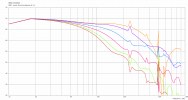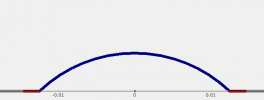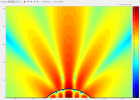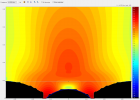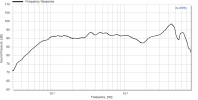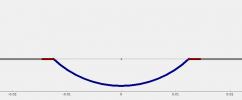From JA review: " As with the Magico M2 that I reviewed in
February 2020 and JCA reviewed in
March 2021, t
he use of a pistonic tweeter with a high-Q ultrasonic dome response results in a lack of energy in the region below that resonance."
I can agree with that one hundred percent. This is often particularly pronounced with Al-dome tweeter, since the break-up resonance is significantly below that of Be-dome tweeter the FR below 20kHz is modified by the resonance.
As
example the Seas Al-dome 27TBC/G 1'' tweeter:
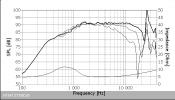
Due to the pronounced break-up resonance, the frequency response drops from about 15kHz - so the effect is not very dramatic.
But this is exactly the reason why Be-domes are used, because they succeed in shifting the break-up resonance significantly above 30kHz.
As an example, a less "good" 1'' Be-dome tweeter (in terms of break-up resonance) from ScanSpeak. Break-up resonance is at 31-32kHz:

Two "better" 1'' Be tweeter from ScanSpeak (the second uses a "tweeter phase plug" to attenuate the resonance):
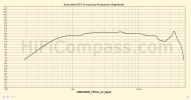
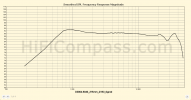
And the SOTA 1'' Be tweeter from Bliesma.
The break-up resonance is at an incredible 44 kHz and is hardly noticeable at all. When I refer to SOTA, I am not referring the flat FR up to 20kHz, but to the 44kHz break-up resonance.
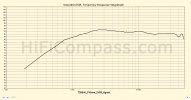 Sources: hificompass.com
Sources: hificompass.com
As you can easily see, there is no frequency response drop below 20kHz, just as our simulation of an ideal tweeter predicts.
Here's what your Stereophile links say:
The FuzzMeasure measurement with the QTC-40 confirmed that the M2's response rises again above 20kHz, with a small peak present at 22.5kHz and a higher-level peak close to 35kHz.
It seems that Magico have the break-up resonances of their Be tweeter less well under control than for example ScanSpeak and Bliesma.
This is also shown by the unsmoothed measurement of the Magico tweeter you linked. Had not yet taken a very close look at the frequency response of the Magico Be tweeter. There seems to be a few problems.
The break-up resonance is at 28kHz, which is in the frequency range of or is exceeded by very good 1'' Al-tweeter. For a 1'' Be-dome tweeter I would expect a break-up resonance >30kHz. The
Bliesma 1.3'' Be-dome tweeter for example has a break-up resonance of 31kHz.
The V-shaped dip at 14kHz might not be caused (or only) by the 28kHz break-up resonance, but by the waveguide.
It is not a SOTA Be if it does not follow that pattern (i.e. not as pistonic - simple physics ). Early Magico Be tweeters were like that as well.
Not sure if I understand this sentence correctly. As I said above, there are possibilities to cause an early frequency response drop also by the tweeter design:
For the frequency response measured for the Magico A5, you have to intervene accordingly in the speaker design, by XO and or WG, dome form shape, motor design.
For example, the tweeter dome shape can be used to influence the radiation pattern of the tweeter. Then you would still have piston-like behavior but a frequency response drop.
With a 1'' dome tweeter you can influence the radiation by the dome height. Of course, the break-up resonance changes to lower frequencies if the optimal stiffness of the dome design is not considered.
As example a simulation of a 1'' dome tweeter with 3, 5, 7mm height:

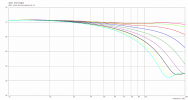

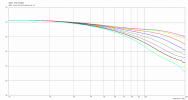
However, if the best possible break-up resonance is no longer achieved with such a design, this would be a dubious design decision, since I can easily achieve similar frequency response drop via the crossover - of course I can't influence the radiation with the XO with, but to do that you use a WG.
a 3rd party review and are indeed, unsmoothed (or minimal smoothing) gated measurements. Taken by no other then Martin Colloms
You are right, I misinterpreted the measurement

With +-15° the vertical measurement is meant (not horizontal as I meant) and these should of course differ.
Fixed it in my previous post.


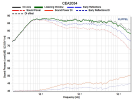



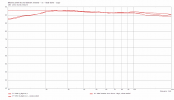

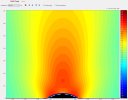
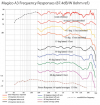









 With +-15° the vertical measurement is meant (not horizontal as I meant) and these should of course differ.
With +-15° the vertical measurement is meant (not horizontal as I meant) and these should of course differ.
